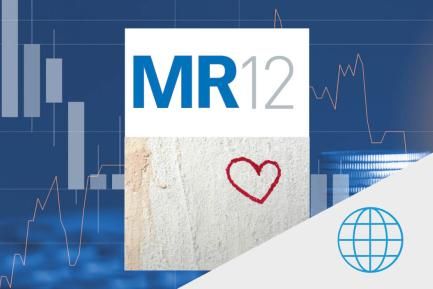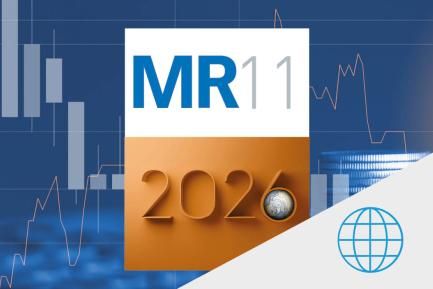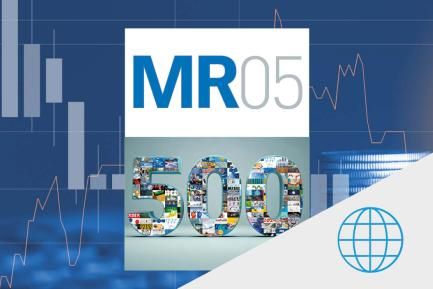
2023, a year of digestion forthe global economy
The outlook improves within an environment of weakness
The world economy is facing a slowdown in 2023 marked by the need to digest the consequences of the war in Ukraine, high inflation and the consequent monetary tightening. Within this context, the latest data provide some positive news: economic activity has held up better than expected over the winter and inflation continues to slow down. The savings buffer, the strength of the labour market and the fiscal aid to help confront the energy crisis have supported demand, while the supply constraints have been alleviated by the normalisation of the bottlenecks and a moderation in energy prices. All this leads us to expect a less marked economic slowdown than was feared a few months ago, although this improvement still does not allow us to escape the environment of high economic and geopolitical uncertainty. In addition, the monetary tightening is beginning to be felt and its consequences will be more tangible in 2023.

Inflation: moderation in energy but inertia in the core components
One of the major uncertainties for which we should get some clarity in 2023 is the speed of the correction in inflation. From last year’s highs, headline inflation has been slowing while the underlying pressures have shown more inertia: the latest data show headline inflation of 6.5% year-on-year in the US (corresponding to December; –2.6 pps versus the peak) and of 8.5% in the euro area (January; –2.1 pps). The main force behind this decline is the gradual correction in energy prices, which will intensify in 2023, both due to the base effects themselves and because of the better outlook in the energy sphere (especially in the European gas market, with a decrease in the futures for 2023 in January of around 50% compared to the Q4 2022 average). Inflation will also decline on the back of the normalisation of the bottlenecks that had been hampering global supply and which had already improved markedly by the end of 2022. The inertia for inflation will most likely come from the components most sensitive to the labour market, where the dynamics in the US and Europe could be quite different: US wages appear to be slowing from their recent highs (from 6.7% in summer to 6.1% in December, according to the Atlanta Fed’s benchmark indicator), while in Europe they began low but are gradually increasing.

Europe held up better than expected in 2022; the US and China disappointed
The figures published for Q4 2022 GDP have reflected a somewhat surprising disparity between the world’s major economies. So far, economic activity in the euro area has withstood the war in Ukraine better than expected, thanks to a mild winter, high gas reserves (at the end of January they were still at 70% of capacity) and savings in gas consumption. Specifically, growth for the year as a whole (3.5%) was close to what had been expected at the beginning of 2022, and a contraction in Q4 was avoided (+0.1% quarter-on-quarter). Moreover, although GDP would have remained stagnant without the abnormal contribution of Ireland (GDP growth of +3.5% quarter-on-quarter), the two major economies most dependent on Russian gas – Germany and Italy – managed to retreat less than feared in Q4 (–0.2% and –0.1%, respectively). In contrast, the world’s two biggest economies grew much less than expected in 2022: the US did so by 2.1% (vs. 3.5% projected a year ago) and China, by 3.0% (vs. 4.7%). The disappointment of the former reflects weak GDP data in the first half of the year, while in Q4 economic activity grew by 0.7% quarter-on-quarter. China, meanwhile, was heavily constrained by the COVID-related restrictions, to the point that GDP stagnated in Q4.

Cautious optimism in the first European indicators of 2023
Against a backdrop of economic activity holding up, a slowdown in inflation and a moderation in energy prices, the first economic indicators of the year in Europe signal an improvement. Specifically, the euro area PMI (50.3 points in January) emerged from recessive territory for the first time in six months and the sentiment index produced by the European Commission (ESI) improved for the third consecutive month, reaching 98 points (very close to the 100-point level which marks the historical average). These indicators are in addition to a solid labour market, with a very low unemployment rate (6.6% in December) and an activity rate at its peak (75%). Taken together, the data are still showing stagnant economic activity, but they also suggest that the weakness is not as pronounced as feared. Therefore, we have improved our 2023 GDP forecasts for the euro area and its major economies.

Mixed signals in the US
US GDP managed to grow by +0.7% in Q4, but its composition reveals some indications of a slowdown in 2023. Specifically, investment, and residential investment in particular (–1.7% and –7.5% quarter-on-quarter, respectively, in Q4), has been feeling the effect of the Fed’s rate hikes for several quarters now. In fact, data for the real estate market show a sector in retreat, in terms of both prices (the Case-Shiller index went from growing by over 20% year-on-year in early 2022 to just under 8% in November) and sales transactions (home sales fell again in December for the eleventh consecutive month, according to data from the National Association of Realtors). Moreover, the confidence indices, which had remained high until autumn, have deteriorated in the manufacturing sector (January ISM at 47.4 points) and show significant volatility in services (ISM at 49.6 points in December and 55.2 in January). The signs of slowdown are less visible in the labour market, which remains very robust with historically low unemployment (3.5% in December) and a strong job creation rate (+291,000 on average in Q4 2022 and an exceptional +517,000 in January) and is providing a significant tailwind for the economy.

China seeks a return to normality
After an initially disorderly withdrawal of the zero-COVID policy, with a major wave of infections and declines in mobility, the latest data are beginning to suggest a revival of economic activity. Beyond the GDP data already mentioned, the latest figures for industrial production and retail sales were somewhat better than expected (+1.3% and –1.8% year-on-year in December, respectively), while real-time indicators point to a rebound in mobility in January. Also, the Caixin PMI for the services sector climbed to 52.9 points in January, while the manufacturing PMI remained at 49.2 points. However, the economic reopening faces an uncertain context, dominated by doubts over the population’s degree of immunisation (according to some estimates by the University of Beijing, by mid-January just over 60% of the population had been infected since the beginning of the pandemic, although these figures are shrouded in high uncertainty). The coming weeks will be key: with the Lunar New Year in China, there was a significant movement of people to rural areas, with older populations and comparatively low vaccination levels.



